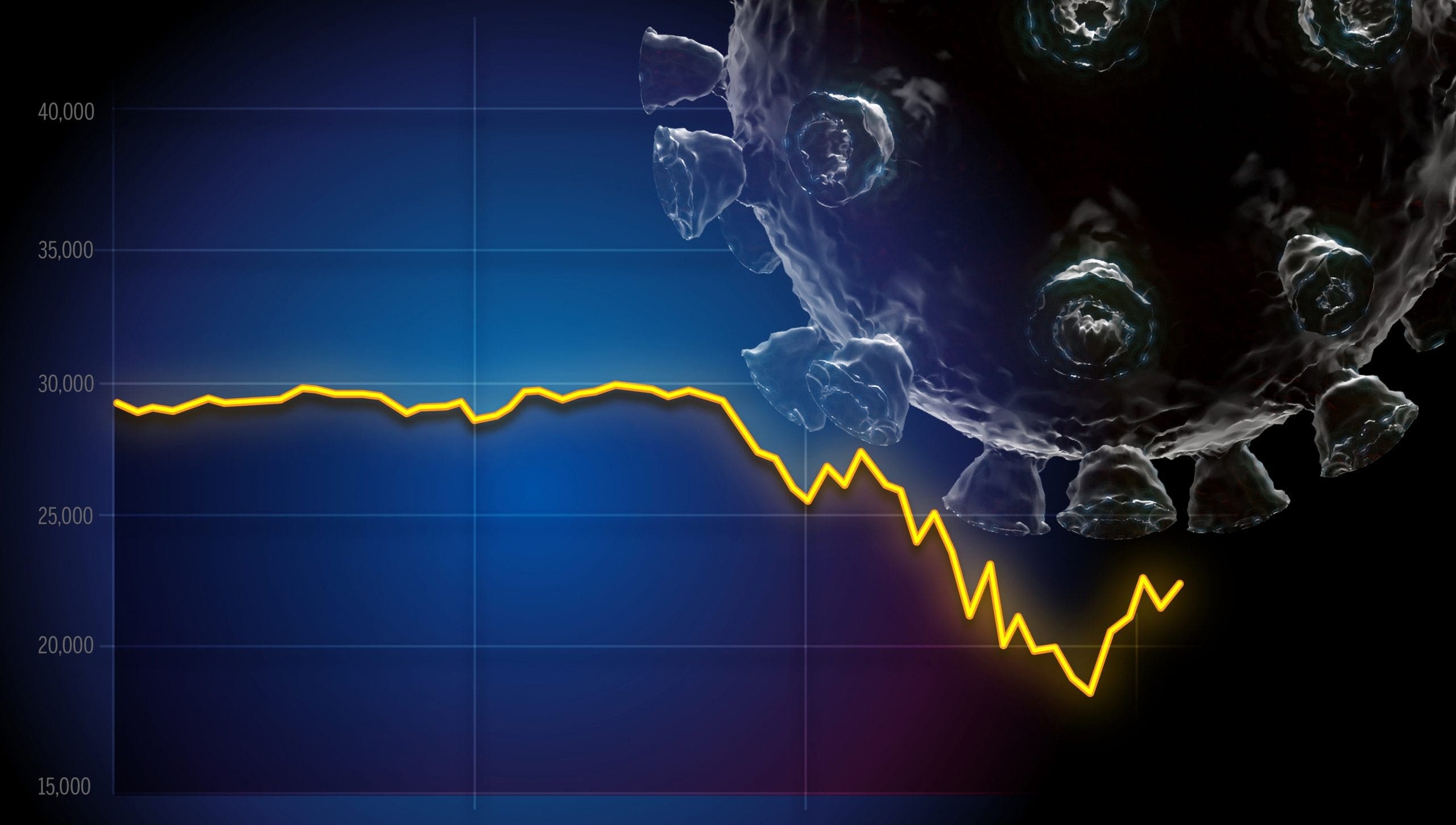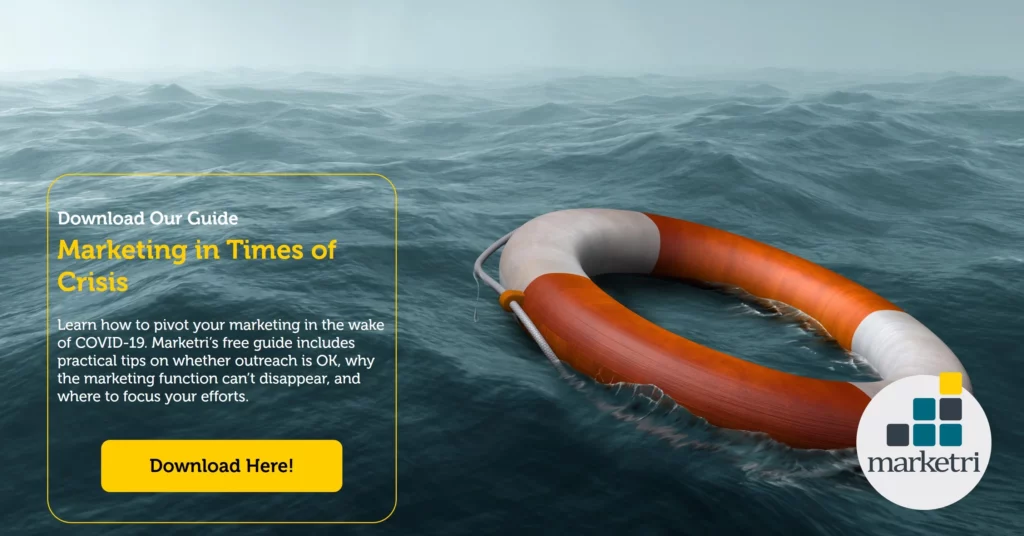Which Letter Will the Economic Recovery Resemble, and How Does That Impact Marketing?
V, U, W, or L? Sadly, Vanna won’t be revealing one of these four letters, which represent how the U.S. economy will rebound from COVID-19 and have significantly different consequences. It’s good to be knowledgeable, so check out “Alphabet Soup: Understanding the Shape of a COVID-19 Recession” for more information. But if you’re pressed for time and need the CliffsNotes version, here you go:
- V is for Victory. This a sharp decline
followed by a welcome sharp increase in Q3, 2020. - U is for Ugly. This means a sharp
decline, followed by a prolonged recession in 2020, and a rebound in 2021. - W is for What is happening? You get the
picture…. Up and down. Up and down. - L is for Let’s not talk about it. Shh…
With a solid economic foundation, let’s get down to brass marketing tacks. How can companies prepare and best leverage modern marketing in each situation? Unfortunately, there aren’t any research papers or textbooks to shed light on this vitally important topic. Unprecedented times call for very solid guesses, and here are mine.

Marketing for V
The U.S. economy has been in sharp decline. With states
beginning to ease restrictions on stay-at-home mandates and Congress’ second
infusion of capital to distressed companies and industries, we are likely
nearing the bottom. The V scenario predicts a surge as quick as the decline,
meaning the time for companies and their marketers to prepare is now.
First, let’s clarify some things. Marketing is not sales. I don’t recommend hard selling of any kind. Here’s a recent post from Kipp Bodnar, the CMO of HubSpot. As you see, cold emails and aggressive selling aren’t working and likely won’t be appreciated much on the upswing:
Let’s focus on what will work! Consider making a light marketing touch that reassures clients of your company’s health and how it has worked hard to keep its workforce intact and safe. If your company did layoff or furlough employees, I am sorry. It’s okay to communicate the sad news as it’s better for customers to learn through you than the grapevine. (Dude Solutions did a wonderful job of communicating this difficult news.)
Next, you’ll need to plan for a targeted marketing blitz. It
needs to be fast and furious, but not at the expense of being well done. For
content, I like videos right now, and they don’t have to be super polished and
fancy. People are missing people. It’s the perfect way to deliver an
authentically helpful message. I’ve been experimenting with Vidyard and think it’s great so far. One of
my clients uses LOOM effectively, and it’s
a free tool.
In terms of your campaign structure, you’ll want to plan an
email drip campaign for existing customers. Take all the knowledge gained
through sales conversations over the past few months to develop a content
strategy based upon the inbound
marketing methodology. Be helpful first. Sell last. (And only when there’s
expressed interest either verbally or through meeting a lead scoring threshold.)
You will need an aggressive multi-channel campaign for prospects. Remember, your company needs to capitalize on the rebound. There is question as to whether the “V” will turn into a “W,” so allocate resources and hit the market hard. Repurpose your customer-facing content if possible, but you’ll need to tap social (paid and earned), PPC (pay per click) and maybe try the public relations route if you have a unique message or story to share. Be sure to have high-converting gated content available, so you can get as many new contacts in your pipeline to nurture as possible.

Marketing for U
The “U” scenario means business will be off for quite some time, but there is still light at the end of the tunnel. While I profess to have never run a marathon, I’ve spoken to many people who have, and it seems a good analogy for this situation. Marketing needs to be slow and steady, and cost containment needs to be considered.
If you have in-house marketers, they need to be “doers” rather than “coordinators.” Marketing doers can perform one or more of the following: plan, write, manage marketing technologies, design, test, and/or measure. Marketing coordinators manage marketing doers that are either internal or external. At a slow-and-steady pace, there is little need for those who coordinate, and those positions should be reimagined or eliminated. If these decisions leave your business without in-house marketing talent, consider outsourced marketing services. It’s a variable-cost model, which enables companies to get the exact skillsets they need, meaning very little waste and a highly efficient approach.

Execute the light marketing touch mentioned in the V scenario. Companies may want to do more than one communication, as the prolonged recession will have buyers wondering about the health of their vendors. Open and honest communications are important to maintaining your buyers’ trust. Develop a 3- to 6-month content strategy that is heavily focused on what marketers call “top-of-the-funnel” content—educational content in the form of blogs, vlogs, and videos that will live on your website. Ensure that this content supports keywords that your company would benefit from ranking on the first page of Google.
There is a science to developing and executing content
strategies so be sure to get advice from an experienced marketing professional
such as a Fractional
CMO before embarking on the effort. Create one meatier piece of content,
like a guide or whitepaper, that will be used for lead generation. As
your content creation drives traffic, you’ll want to convert unknown visitors
into known leads to be nurtured with future content. The goal of this exercise
is to create an “evergreen campaign.” Once it’s created, it will continue to
bear fruit for a very long time.
Advertising and PPC (pay per click) are the opposite of
evergreen campaigns. Once they run, they’re done. Programs that require an
investment to “rent eyeballs” are not recommended for the “U” scenario until
there’s more certainty around the timing of the upswing.
Marketing for W
The “W” scenario marketing’s antagonist. The fundamental
principal behind marketing is that it should be consistent. A W economic
recovery presents surges in demand followed by swift retractions. The most
challenging dilemma for leaders is how to staff the marketing function for this
wild, yet not-so-fun ride. My advice is to keep your in-house structure lean.
Having marketing as a variable cost will offer a competitive advantage.
Companies will be able to contain costs during the economic slides and take
full advantage of surges. Evergreen campaigns should reign supreme during the
downtimes, followed by marketing blitzes on the upswings. Marketing skillsets
required for this yo-yo scenario will be wildly different, which is another
important reason to keep the in-house marketing department lean.
Marketing for L
I said we weren’t going to talk about it! Most articles I’ve read don’t predict this scenario, so let’s remain optimistic.
We’re in this together!
As we celebrated the start of a new decade on January 1, 2020, no one could have predicted what was about to unfold. As business leaders, we are now challenged with predicting what shape the economic recovery will take and how that will impact all areas of operations, including marketing. I hope this blog is helpful to you. Regardless of whether the future is a V, U, W, or even L, we will get through this together!
Need more help navigating your marketing through COVID-19?
We’ve also put together a guide to help you navigate the crisis and come out stronger. You’ll find practical tips on how to approach marketing in the wake of COVID-19—like whether outreach is OK, why the marketing function can’t disappear, and where to focus your efforts right now:






